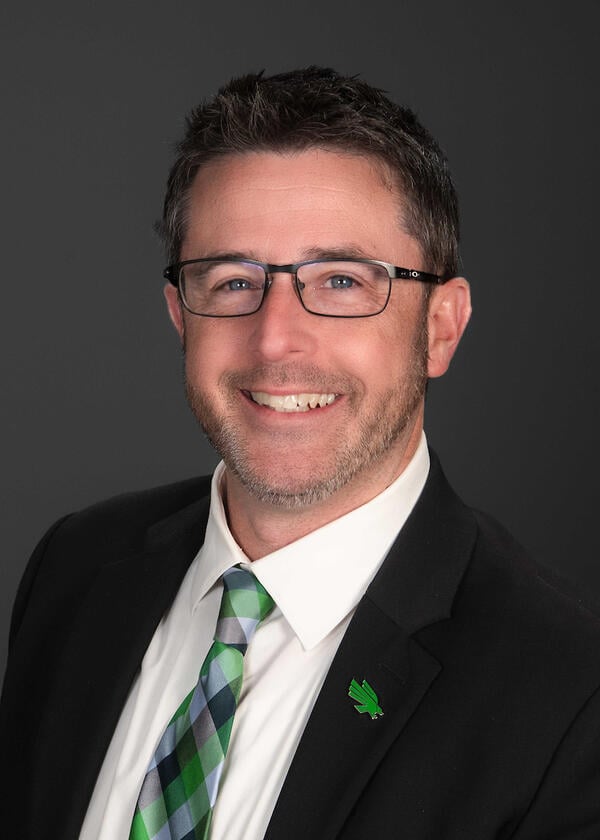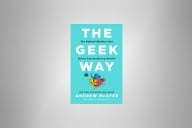You have /5 articles left.
Sign up for a free account or log in.
Adam Fein is the vice president for digital strategy and innovation and chief digital officer at the University of North Texas. He and I travel in many of the same online learning circles, and over the years, I’ve greatly benefited from his expertise, collegiality and generosity. To learn more about Adam’s role, educational and professional background, and thoughts about the role of online learning for institutional resiliency, I asked if he’d share his thoughts in this space.

Q: Until very recently, the roles of vice president for digital strategy and innovation and chief digital officer did not exist within higher education. Help us understand your job. What is a typical day (or week) and what are your primary responsibilities and accountabilities?
A: You’re spot on, Josh. When I was hired in late 2018, there were definitely fewer roles fully dedicated to digital transformation/academic innovation. There were leaders paving the way for these positions—Nelson Baker at Georgia Tech, Rovy Branon at Washington and, prior to my current gig at the University of North Texas, I was the second professional in an educational innovation position at the University of Illinois after Deanna Raineri (who is now the chief academic officer at Risepoint).
Part of what attracted me to my current role was what a typical week might look like—the breadth and depth. My division serves both the academic colleges and the administrative divisions. We house the teaching and learning center (CLEAR—Center for Learning Experimentation, Application and Research), which includes instructional design, creative media production, faculty development, learning applications and digital accessibility and compliance.
We have a digital growth team responsible for the UNT Online aggregate brand that provides marketing services for our 40-plus online programs. Our enterprise team is responsible for corporate partnerships and professional learning. We have a number of industry partners in a variety of different scenarios: We have a joint master’s program in sport entertainment management between our College of Business and the Dallas Cowboys. We have tuition benefit partnerships with Amazon and Cinemark. We have programs and training we provide to Toyota, the PGA of America and JPMorgan Chase. It’s been very successful and is helping us start to connect the dots between college and workforce/job outcomes. Finally, we have our Learning Analytics and Digital Research Center, which works with faculty on sponsored research projects related to digital education and learning outcomes.
A typical week for me, first and foremost, is working with the 52 staff members in my division to ensure we’re providing a world-class educational experience to all of our students, no matter where they are located. Higher education has had far too many barriers for too long—especially for adult learners. It’s time to bring down those walls and provide 21st-century services for a 21st-century experience. In an average week, I’m also in a number of meetings with our academic deans and my fellow VPs, collaborating on policy and strategy and supporting President Keller’s new strategic pillars. I spend a good amount of time connecting with colleagues around higher education and across ed tech to be certain we are up to speed on anything and everything that can move the learning needle for our students and faculty. I serve on three advisory boards (UPCEA, Podium, Coursera) and have been spending a lot of time experimenting with how gen AI will impact our industry (spoiler: significantly).
Q: Your Ph.D. is in educational policy, organization and leadership. It is still unusual for someone in a digital learning leadership role to have done their graduate work in a closely relevant discipline. (My Ph.D. is in demography and sociology.) Can you share your professional and educational journey with us and describe how your doctorate relates to your current work?
A: Ha-ha, that’s probably true. I was incredibly fortunate to have a Ph.D. adviser, Dr. Nicholas Burbules, who was supportive of me focusing a doctorate in education policy on new issues of technology and cognition. I was familiar with Dr. Burbules’s work because Drs. Scott Johnson, Jim Leach and Faye Lesht took a chance on me early in my career and entrusted me with the college of education’s early online efforts.
I received my master’s in human resource development and learning technologies while leading a small band of phenomenal graduate students during a time when there were many pundits (and prospective students) questioning whether the value of an online degree had an ROI high enough to be worth the time and effort. Thanks to their hard work and many others across the academy, we can see how that turned out. My bachelor’s was in communication, where Dr. Andrea Hollingshead (now at the University of Southern California) taught me how to code qualitative research and changed my perspective on graduate school. All of my degrees are from the University of Illinois at Urbana-Champaign. Wonderful place.
My dissertation focused on the cognitive theory of multimedia learning (Richard Mayer) and relates closely to the work of my division today. Anyone who is interested can find our research at the Learning Analysis and Digital Research Center, led by Dr. Tania Heap.
Q: In an era where every school seems to be trying to grow its online portfolios to bring in new revenues, how can a university succeed in a market where the supply of online programs is increasing (from both universities and companies) but learner demand is flat?
A: Great question. While many are questioning the value of a college degree and learner demand might be flat in the [first time in college] space, it does not appear to be down for programs and professional development focused on the adult learner. The adult learner audience is four times larger than the FTIC population, and the fresh-out-of-high-school numbers have hit an enrollment cliff.
Adult learners can achieve their career goals more easily with a degree—particularly an affordable online degree that allows them the flexibility to stay fully employed and to tend to their families, if applicable. Bachelor’s degree holders are half as likely to be unemployed as their peers whose highest degree is a high school diploma, and they make $1.2 million in additional earnings over their lifetime (APLU, 2023). A challenge to universities for the road ahead is that we are largely still set up to recruit on-ground 18-year-olds. While this remains a vital audience, we cannot only recruit to this demographic—to continue to do so is shortsighted both academically and fiscally.
A final thought: Colleges and universities need to take seriously the job outcomes of their graduates. Preparation for this should begin early in an undergraduate experience. Every student should have what I refer to as a plus-one. We have a whole initiative dedicated to this for our online students. These include affordable virtual internships with companies like Uber and Twitch (Podium) to noncredit industry-relevant certificates and microcredentials from Coursera, Google, Meta and IBM.
I prefer a scenario where our students can add University of North Texas + Google to their LinkedIn profile, not just their degree. Universities can still be bastions for the liberal arts, graduating well-rounded, ethically minded students and prepare them for the world of work. It’s not an either-or; it’s a both-and.








